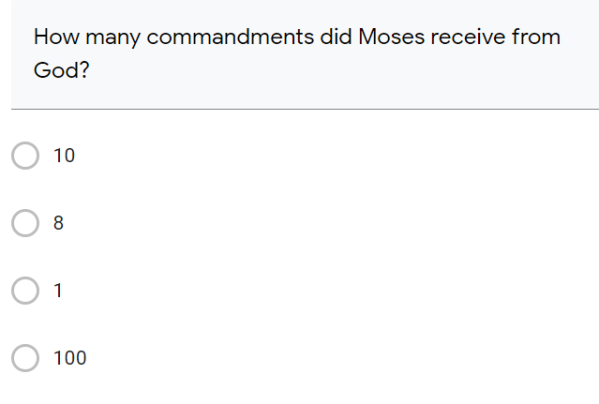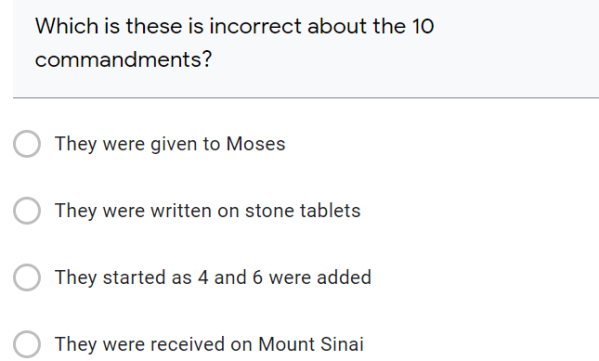If I teach a topic on Hinduism in one term and another on Christianity the next, what connects them? They probably will both include ‘beliefs’ maybe some ‘practices’ and maybe some textual sources. But is that enough to allow students to make connections and develop an understanding of religion as a whole?
I am going to argue that we can create a better picture of religion & belief by using substantive concepts through our curriculum.
Developing a schema
Why do we need to do this? RE is a ‘horizontal’ or cumulative subject; knowledge isn’t all hierarchical. I don’t need to know and understand Hinduism to study Christianity (although there may be some cases where it might help). So progression in RE is based on knowing more, potentially disconnected knowledge, in order to begin to create schema. But what makes connections in those schema? There are two ways.
Firstly , the study of the religion itself becomes a schema. As soon as students start learning the basics they can start to pin more knowledge to create a picture of that religion, including the diversity and differences within it. If teaching systematically, this schema is usually a relatively short term one in that it is created in a topic which might be a few lessons a half term/term.
Secondly, we want students to create a much bigger schema. That of ‘religions and beliefs’. This is created over a much longer period of time. We’d hope this begins when they first hear about religions and beliefs and continues for life however the majority of the knowledge, for most, is likely to come from RE. But as RE has such a huge domain of potential knowledge, how can we start to build a student’s schema of the whole picture? How can we start to ‘pin’ knowledge that can seem very disparate and unconnected?

We need to develop a ‘religion’ schema to contribute to an overall ‘religions & beliefs’ schema.
This is where substantive concepts come in. To understand what these are we need to consider the role of knowledge in RE.
Knowledge can be divided into the substantive and the disciplinary. Disciplinary knowledge comes from the disciplines of RE (discussed in this blog). So this leaves the substantive which is the ‘stuff’ of RE. It is the content, the facts, the topics that we teach. Look in any textbook and it will be full of substantive knowledge. So, substantive concepts are the key or ‘big’ ideas within the domain.

Categories of concepts
Many agreed syllabi reference substantive concepts. You may have seen them listed in categories. These are usually divided into three different categories as shown.

I’ve added a fourth category to consider how diversity is an important concept within religions
These concepts are sometimes shown as hierarchical in themselves with a suggestion of teaching them at different key stages. I suggest that they aren’t intrinsically hierarchical but can be used to develop knowledge and understanding across topics.
Sometimes, these are used to create a topic in their own right. For example a topic on ‘prayer’ where students look at definitions of prayer and different beliefs & practices of prayer across religion & belief. I would argue that these kinds of topics can be problematical as they look at the concept in one block which may limit a student’s ability to be able to reuse and reapply that concept later on. However this can be addressed with use of strategies to help with long term memory such as retrieval and ‘testing’. Secondly, as different views of prayer are likely to be based on other key beliefs & teachings that are complex, covering those all those beliefs and teachings as well as looking at prayer itself would take a long time which people probably don’t allocate and therefore the topic may end up being superficial.
This is a thematic approach that, in my opinion, requires a lot of substantive knowledge of the religions being included before you can teach the concept itself, which I suspect is rarely done well.
However if we use these category A/B concepts explicitly across topics and religions, they are taught in context so students can build them as part of their topic schema (and then move on to thematic units if desired). If they are explicitly addressed across topics/religions then they can be used to build up their ‘study of religions & beliefs ’ schema. They become ‘golden threads’; the things that provide cohesion and coherence to our curriculum.
How to explicitly teach substantive concepts?
One suggestion is to use an enquiry question (EQ); that is a question that requires a series of lessons ( across a short/medium/long period of time), where clear substantive knowledge is needed to piece together an answer.

This example shows how the concept of ‘the self’ might be repeatedly analysed across topics/religions through an EQ- It becomes a ‘Golden Thread’
This would need to be skilfully done. It would need to be introduced, either as a lesson introducing the EQ by itself and the explanation that it will be addressed across time or introduced the first time that it is met within a topic.
Practical tips
- Write the concepts into curriculum plans to map out where they occur
- Take time to analyse yourself how a concept can be studied within each religion/topics. What is the substantive knowledge needed to explore the concept?
- Highlight the EQ when you mention the concept – keep it as a central PowerPoint slide or use a simple image to bring students back to it
- It needs to be repeatedly referenced and students reminded of the prior learning of that substantive concept. Ask students ‘what did we learn about concept X in Y religion?’ before looking at it in religion Z
The aim of this approach is that once they’ve understood what the substantive concept is they can use it independently to apply to new material (in the above diagram shown by the thread continuing beyond the schemes. Their overall schema can continue to grow due to the Golden Threads giving them ‘pins’ to anchor new knowledge on to.
However we need to be careful not to over rationalise a concept. They can be very complex and over simplification will not help student understanding. We need to be clear that a concept may have different meanings, diverse interpretations and varied influences on believers and their practices. Indeed the ‘non-existence’ of a concept is equally interesting, however should be explored with caution not to show a ‘deficit’ model. The knowledge and understanding of a substantive concept should allow a student to be able to analyse it in a variety of contexts, including in some cases, non-religious or secular contexts.

The different ways a concept can be considered across religions & beliefs
The great thing about this model is that it promotes challenge as part of curriculum design. As students build up their smaller religion schema they are contributing their their overall ‘religions & belief’ schema. This is progression. The curriculum itself becomes the model of progression. They know and understand more and if it’s done well, can use it independently. It overall contributes to their religious literacy. They should be able to talk confidently, using in-depth subject knowledge, across religions & belief on a concept and where appropriate make inferences about how it might work in new contexts.
‘…..curriculum sets out the journey that someone needs to go on to get better at the subject. In short, it models the progress that we would hope (although cannot guarantee) that someone will make. The curriculum is the progression model.’
Using this model also supports what I think is the main ‘form’ of expressing knowledge & understanding in RE: argumentation. If a student clearly knows a definition/s of a concept, can explain multiple interpretations and diversity of beliefs and practices linked to it, using sources of authority, picking out possible similarities, differences and summarising overall, they’ve constructed a reasoned argument. I don’t need to tell them how to construct an essay; their accumulation of knowledge has already done this for them. Whilst they may need help scaffolding it, they already have the substantive knowledge needed to construct a knowledgeable, well reasoned, logical argument. The content leads to a structure rather than me teaching them a structure that they then need to try to put the content in to.
None of this is new; but it’s relevance is core in curriculum design, which teachers are reflecting on more. This idea may be complex but it is supposed to be part of a well thought out curriculum. We need to be thinking carefully about how our subject works and what we can do to ensure that our students get the best understanding of what it means to study religion and belief. This is just one piece of the puzzle.
*This presentation was part of the TMRSicons conference July 2020.








